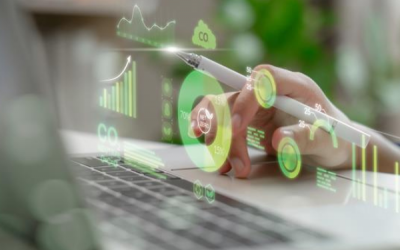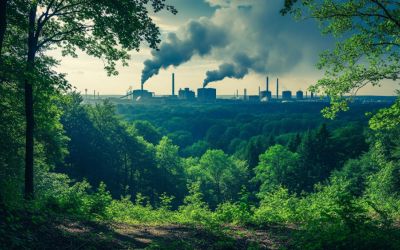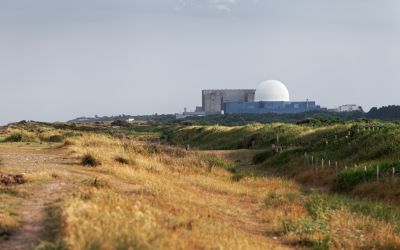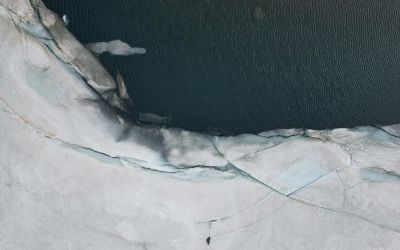Sustainability and innovation: Aliaxis Group
Eric Gravier, Environmental Manager at Aliaxis Group, discusses the latest innovations in the water and construction industries and how, through its development of fluid handling systems and commercial construction, Aliaxis is proving to be a leader in the sustainable development field
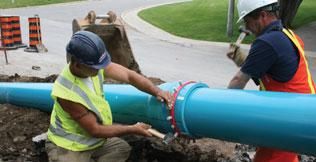
The Aliaxis Group is a leading global manufacturer and distributor, primarily of plastic fluid handling systems used in residential and commercial construction, as well as in industrial and public infrastructure applications.
They operate in over 40 countries and have well-established markets of Europe and North America, we have operations in Latin and South America, Australasia and Asia.
Through a continuous process of improving production efficiency in the core technologies of plastic extrusion and injection moulding, Aliaxis is a key innovator and leader in the field of sustainable development. Climate Action spoke to Eric Gravier, Environmental Manager at Aliaxis Group to find out more.
Can you tell us why choosing plastic means selecting a sustainable solution instead of concrete or clay?
A short answer to this is that plastic in our sector is a very economical choice, both from a resources and a benefits point of view. Environmental balance sheets consider not only economical use of resources, but also the cost of maintenance during the life-cycle of the applications. Since most plastics are either easy to maintain or require no 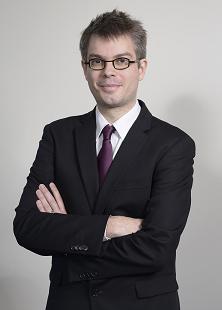
Compared with alternative materials in the building industry, plastics usually perform very good in every kind of environmental assessments. Along with saving resources, the low maintenance cost throughout its life cycle and good recyclability of plastics have a positive influence on these assessments. In particular, the materials we use are recyclable at the end of their life-cycle. We are also able to use external recycled material in high-quality pipes as specified in the relevant standards and norms.
Several studies performed by well-know associations like TEPPFA (Europe) or PIPA (Australia) for example underline these statements.
What are the key challenges you face in providing these solutions and how are they being overcome?
The Aliaxis Group aims to be a global leader in fluid handling systems universally respected for innovation, quality, excellent service and value. To match these expectations, the Group faces two specific challenges:
- To ensure that all actors in our value chain will be able to deliver top quality products everywhere in the world.
- To integrate all the specifications, customs and traditions of a local market, including anticipating local trends.
In order to be ready to face these challenges, we developed our internal skills in market monitoring and our R&D teams in various key regions.
In addition, through some specific acquisitions, we manage to be an influential partner in the local distribution network and we are constantly in contact with key actors to better understand the needs and targets of our customers.
How does Aliaxis ensure that best practises and cutting edge innovations are being shared and constantly developed?
One year ago we decided to put considerable investment in our in order to take all the benefits from our worldwide presence. We had the strong feeling it was the right time to optimise our internal process to gather all the signals we need from our different geographical areas.
To develop our scheme, we used two approaches:
- The implementation of new NICTs to offer our local teams the possibility to work on best practices. At Group level, we put substantial efforts in gathering best practices from our external network and then to disseminate these internally.
- As systems and software are not enough, we encourage our teams to develop more technical meetings on a regular basis. That’s the most relevant way to disseminate best practices through trainings and to improve new ideas at the same time.
The development of new group KPIs will also help to monitor our evolution. As we will be able to see where we achieved our goals or not, we will push for using the most recent innovation and to create internally a new mindset to generate brand new ideas.
How does Aliaxis’ membership of important associations such as The European Plastic Pipes and Fittings Association (TEPPFA) help to assist the Group in staying at the cutting edge when it comes to sustainability?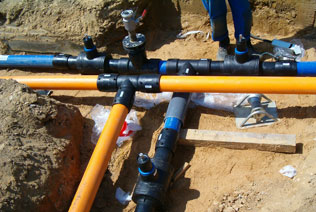
TEPPFA represents the manufacturers and national associations of plastic pipe systems in Europe. The association strives to raise awareness of the value brought by plastic pipe systems to the planet.
Instead of being too much focused on competing with others plastics products, associations like TEPPFA push us to think about our strong position in comparison to other materials. At the end of the day, our market position is strengthened because the share of plastics is increasing.
In that context, TEPPFA decided to launch an operation to calculate LCAs on plastics pipes and to compare results with our competitors’ non-plastics products. LCAs were performed for both sides and the results were promoted through EPDs. The results were in favour of plastics pipes and this has enabled us to move from a defensive position to having a very positive story to tell.
In addition, we benefit from the perpetual exchanges of best practices organised within the various TEPPFA workings groups.
Could you expand on natural water re-cycling and why this is so high on the current agenda?
Based on the latest studies on this topic, figures are very expressive: freshwater constitutes only about 2 per cent of the water on the planet and competing demands may lead to an estimated 40 per cent global water supply shortage by 2030. In addition, freshwater resources vary widely both in space and in time that is often in conflict with water demand. The world population experiencing water scarcity is expected to increase in both absolute and relative numbers and possibly reach two-thirds of the total population in the next several decades.
So, signals sent by local authorities show clearly that all actors in the value chain must find ways to reduce water consumption, to make it more available, but also, altogether we need new ways to re-use and recycle water when the natural resources are not enough.
That’s why water re-cycling is a common target for many around the planet.
We produce various solutions in this context.
Looking at stormwater drainage problems, systems are generally divided into two categories, and offer all the benefits of using plastics: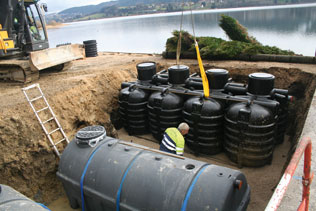
- Above ground infiltration systems: for natural or artificial surfaces. Typical examples of above ground systems include porous pavements and paviours, or infiltration basins and swales.
- Below ground or sub-surface infiltration systems (buried structures): generally a rubble-filled pit, although more efficient alternative options include modular plastic cells wrapped in permeable membrane. Due to their modular nature, these cells can be configured to suit the capacity required (calculated run-off during peak periods of rainfall) and the land available.
We may also help with attenuation systems. Attenuation controls the flow of water as it goes back to the water course or drainage system - valuable if tackling flooding downstream or an overwhelmed infrastructure. Increasingly, as existing sewer networks approach their capacity, attenuation systems offer a cost-effective solution for accommodating additional catchments without increasing the size of existing sewers. In addition, these systems offer all the benefits of using plastics, in comparison to more traditional materials.
Last but not least, water consumption could be considerably reduced simply by collecting, storing and re-using rainwater at source. Collection of rainwater also reduces the demands on drainage systems and can help to reduce flood risk. Our rainwater harvesting systems are well-recognised, and can combine infiltration with recycling. Ideal for either outside use (garden irrigation for example) or combined with an internal system to flush WC's.
Aliaxis is combining global knowledge and integrating technologies in the ‘Sustainable Water Solutions’ initiative. Could you expand on the key solutions that this is providing?
Drawing on our vast experience, international coverage and ongoing R&D investments, a number of companies of the Aliaxis group have come together in response to engineers’ and specifiers’ needs, market trends and impending legislation looking at the way we manage and control water today and tomorrow. We need to come up with the solutions. Our “Sustainable Water Solutions” combines global knowledge, integrated technologies and optimised delivery. Our international presence means that not only do we understand local issues, but we also have the integrated resources and international supply chain to help design and deliver a complete solution - on time and within budget.
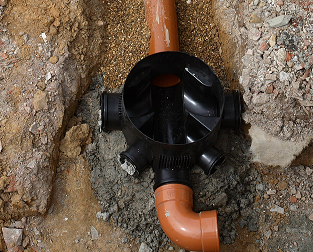 By joining capabilities and sharing expertise worldwide, we offer contemporary, practical solutions for capturing, storing, transporting and disposing of the water in industrial settings. Regarding sustainable water initiatives, our solutions embrace three main areas:
By joining capabilities and sharing expertise worldwide, we offer contemporary, practical solutions for capturing, storing, transporting and disposing of the water in industrial settings. Regarding sustainable water initiatives, our solutions embrace three main areas:
- Stormwater and technical drainage - Our modular infiltration and attenuation units provide a complete and state-of-the art solution for both residential and commercial applications in terms of stormwater management. In addition, as part of our stormwater management solutions, a full range of medium and heavy-duty channel drains has been developed. Our channel drains cover all load classes and have some clear benefits against channel drains made out of classical materials, including ease of installation and handling.
- Wastewater treatment - Our offer goes from equipment (pumps...) and pipes to build a waste water treatment plan (in South America for example) to a small wastes water treatment unit for residential areas. Everything is combined to be able to provide the market with the most adequate solution, depending on the geographical, geological and economical situation.
- Water reuse - The use of drinking water for non-hygienic purposes is widely acknowledged to be wasteful and there has been an increase in water rates across Europe and in European legislation dictating the reuse and recycling of water.
What do you feel are the regions in the world that most require sustainable water solutions and what are the challenges of delivering Aliaxis products and systems to these regions?
The combination of raising economies linked with demographical booming areas requires most of our attention. Basically, we based our strategy on the water-stress factor. That’s why we decided to be focused primary on India and South America. We have identified others regions but we prefer to first develop and to validate new solutions for these areas before going everywhere at the same time.
"the challenge we faced was to identify the local partners to work with to perfectly integrate the local conditions and culture"
First, we analysed the situation on behalf of international studies and then we developed local contacts with water specialists and industrial players to fully understand the situation.
Then, the challenge we faced was to identify the local partners to work with in order to perfectly integrate the local conditions and culture.
At the end of this process, we either import our solutions or develop via R&D and marketing teams, the most adequate solutions to the local needs.
Could you expand on how the small Waste Treatment plant is offering an innovative solution and how does Aliaxis R&D offer further support to the Group?
Small waste treatment plants, or so-called “micro-stations”, are a long tradition for the Aliaxis Group. The very first activated sludge micro-station was commissioned in Belgium in 1997. Two years later, a new model was launched on the market, and units have been installed throughout the world, operating daily in Holland, Belgium, Spain, Finland, Poland, Greece, Costa Rica, Mexico and the Czech Republic, among others.
"Aliaxis R&D has been using an experimental site which allows it to test the purification processes of the PureStations® under real-life conditions"
As we are committed to ensure quality and performance, Aliaxis R&D developed a global solution to match our visions. Since 2009, Aliaxis R&D has been using an experimental site which allows it to test the purification processes of the PureStations® under real-life conditions. This platform is linked upstream to domestic wastewater from the neighbouring.
Several purification systems using different technologies have been installed and are monitored daily. The treatment performance of these autonomous stations is evaluated daily by measuring conventional parameters (BOD5, COD, NTK, etc.), which are read at the input and output of each station. In addition, on-site tests under real-life conditions are carried out on the purification processes in order to simulate the reactions of an installation to all types of incident that could occur in real life. In parallel, a fully equipped test laboratory enables samples taken at the site to be comprehensively analysed.
In addition, Aliaxis R&D team is made up of engineers and technicians working together with international installation engineers. Some work is also carried out with engineering schools for water treatment. The Research and Development centre, with its own laboratory, takes on several trainees each year.
It helped us to offer one of the most compact solutions on the market, adapted to small areas and significantly reducing installation damage while preserving the environment.
Our solution is the most economical solution for both installation and maintenance. It doesn’t create operating drawbacks and the system is odour-free (forced ventilation) and also quiet. We provide our customers with a maintenance contract guaranteeing the quality of wastewater and the installation's longevity.
As for all our products and internal processes, we use perpetual improvement methodologies to optimise our PureStations®.


